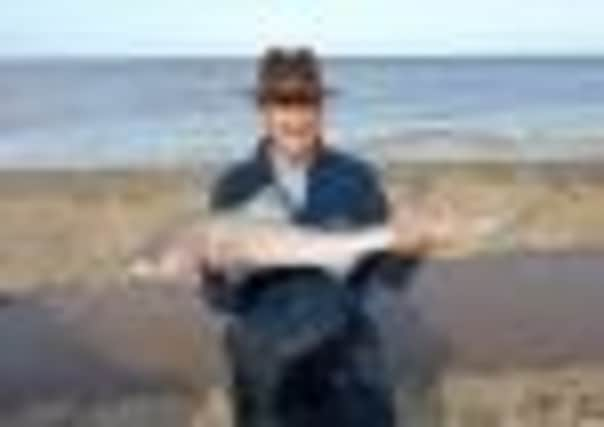Falling hook, line and sinker for a Holderness hound


My first hound of summer was the one that nearly got away. I was talking to a nice couple who were strolling on the beach sharing the fresh air with their two Yorkies. We were exchanging pleasantries when my rod suddenly became airborne.
It leapt off the rod rest and, like magic, slid down the beach towards the calm sea. I thought I had hooked a seal – half-an-hour earlier, a black dog-like face had been bobbing about in front of me with that look that says: “I can catch them and you can’t.”
Advertisement
Hide AdAdvertisement
Hide AdWhatever it was, it was 100 yards out and wasn’t being bullied. As I gently reeled in, it applied its brakes and stopped. As I reeled in again, it changed up a gear and bolted, taking line from my slipping clutch reel. Stopping and running are textbook smooth hound tactics. This is the buzz angler’s dream of – heart in mouth, bottom-clenching, 100 per cent concentration.
I saw the fish surface about 20 yards out. The majestic appearance of the triangular fin was followed by the whole hound jumping out of the water in its effort to dislodge the hook. I politely screamed at my new-found friends to assist.
As I fought ‘jaws’ through the last wave and up the steep beach, it was caught it by the tail and stopped from being sucked back by the returning wave. Job done. Smiles, thanks and pats on the back all round.
On the beach was a peak-of-condition, starry smooth hound around the 8lb mark. It had given a very good account of itself and fought like a fish twice the size.
Advertisement
Hide AdAdvertisement
Hide AdPhotos were taken and I returned it to the sea, aware of the slow breeding cycle of this species. If I wanted one for the pot, I would wait until I caught a smaller one or until one swallowed the hook.
What an excellent start to the summer season.
The starry smooth hound is a member of the shark family and its Latin tag is mustelus asterias. It has the appearance of a shark with the pointed snout and triangular dorsal fin.
The “starry” bit makes it a particularly handsome fish as the grey/brown background is dotted with white ‘stars’ above the lateral line. It hasn’t the teeth of the big white but has powerful jaws used for crushing crabs and other crustaceans.
They have become known a “hounds” because they hunt in packs. When one has attacked your bait, expect more attacks to follow. The bite can be fierce, aggressive and strong. Many a rod has been pulled into the sea by an angry hound.
Advertisement
Hide AdAdvertisement
Hide AdThey can grow up to 30lbs but average about three. These ancient creatures have a third eyelid to protect and clean the eye.
The pelvic fin of the male has developed into “claspers” which, as the name implies, is used in the mating process to make good, close contact with the female.
Recent Irish research has found that they have a two-year breeding cycle and as most smooth hounds are returned to the sea by beach anglers, we will not dent their numbers.
Some sharks in this family give birth to live fish, as do the smooth hounds. The lesser spotted dogfish and ray use the “Mermaids purse” egg capsule method. I used to collect these from the beach as a boy.
Advertisement
Hide AdAdvertisement
Hide AdThe hounds’ annual visit to our coastline is now under way, lured by our plentiful crab population.
We anglers curse the crabs for stealing our bait but Mother Nature has a way of thinning out any surplus and, in turn, does the beach angler a favour.
These types of shark, of which there are about 40 family members, are on the menu in the rest of Europe, especially in France.